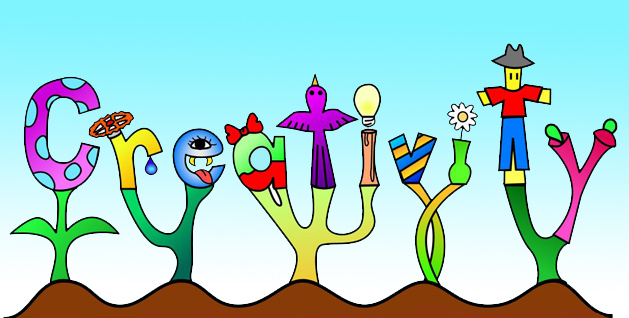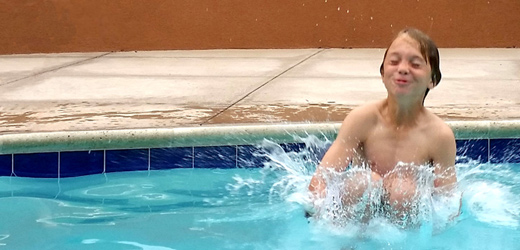
Help your creativity flourish with a little care and feeding

This article isn't for those of you who know you are creative. You live this. For most people, though, creativity doesn't come naturally. That said, everyone has creative capacity.
Everyone.
Just because you can be creative doesn't make it easy. But it's worth the effort—in today's world, creativity is becoming an essential skill.
Here are some ideas to help you nurture and grow your creative capacity.
Have you ever watched a delighted child pick up a fluffy dandelion and blow as hard as they can? Does it make you cringe? Can you hear yourself starting a lecture about making more work for the owner of the lawn?
Try to remember back when you did this as a child…before you had adult responsibilities and lawns to keep weed-free. Creativity isn’t about being inconsiderate, but sometimes it is okay to be impulsive. Not all rules are created equal.

For those of you who can’t bear the idea of breaking the rules, don’t despair. Research shows that having constraints on a problem can actually boost creativity.
For example, consider writing poetry. Poetry forms have all sorts of rules, but rather than shutting down creativity, writing with a form forces you to creatively express yourself within the constraints. Another example to consider is the six-word story.
One of the key steps to allow your creativity to flourish is to question—and sometimes break—your own concept of possible versus impossible.
There is nothing more amazing than talking to someone who is passionate about what they do, whether it is their paying job, a hobby, or volunteer work. They can talk for hours, and their excitement is contagious.
When you are passionate, you are more likely to do and act without analyzing and evaluating your every action or worrying about what other people might think.
What do you love to do? What activities do you do simply because you enjoy them, regardless of whether they are productive?
Exercising your passion can help you identify ways in which you are already creative. You are also more likely to be open to finding creative solutions for time, resources, and other constraints because you have a vested interest in the activity or the outcome.
Following our passions make us happy; when you are happy, you are more creative.
Play is highly conducive to creativity. In this context, play doesn’t mean competitive sports, video games, or family board game night. These can all be fun and beneficial for creativity, but play in this context is:
Creativity is an attitude, and playing helps you practice mental habits for that attitude. In order to build something, create a new game, or even just move your body, you have to experiment, try new things, look for patterns and structure, imagine, and create your own rules.
If you aren’t even sure where to begin, find a four-year old. Four-year-olds are subject-matter experts in the field of play. You might end up digging holes in the yard to create a set for action figures, building a tent for a newly-formed secret society, or decorating the sidewalk with chalk.
It doesn’t matter what you are playing…what matters is what happens to you as you are playing. As you play without stress or an end goal, you may find yourself savoring the smell of fall leaves, noticing the hum of insects on the grass, enjoying the texture of a tennis ball in your hands, or watching the way a light passing through a blanket changes the color of objects under it.
The world is an amazing place. When you observe it through the lens of wonder, you begin to notice its incredible intricacies. In her book inGenius: A Crash Course on Creativity
, Tina Seelig devotes an entire chapter to paying attention, sharing “the more you observe, the more data you collect, the more patterns you see, and the more boldly you can act.”

This may be a great place to start if you think you are more comfortable with analytical thinking (convergent) than creative thinking (divergent). Creativity is often defined by divergent thinking. Remember, though, that innovation—creativity put into action—requires great analytical thinking too.
Wonder is much more fulfilling than focused observation. As you begin to make observations with a sense of wonder, your perception slows down and you relax…you are enjoying the means without the stress of worrying about an end result. Wondering provides opportunities for imagination.
Remember Luna Lovegood from Harry Potter? Luna is able to “believe ten impossible things before breakfast.” She also dresses and does what she pleases without worrying about what others think.
Creative people do not tend to be people pleasers. If you are constantly analyzing how others perceive you, you begin to conform and shut down ideas that are different.
This isn’t about marching to the beat of your own drum. In reality, everybody beats to their own drum. Make it a habit to celebrate what makes you unique and different, let others hear your drum!
Maybe this thought should be: Find your inner Luna and let her out.
Make it a habit to celebrate those who celebrate their individuality and creativity.
Compliment someone wearing an “out-there” outfit. Share an encouraging smile and let that person know “those colors brightened my day,” or “thanks for being you,” or “that pattern reminds me of…”
If you simply don’t feel creative, you may be in a situation or environment that stifles creativity. You may not have control of others, but you do have control of your own actions. Be the change you want to see. Celebrate instances of creativity in your life and in the lives of those around you.
Just do it! Instead of figuring out how to become creative, simply give yourself permission to be creative.
Creativity isn’t easy at first. So take a risk. If you fail, fail forward.

Creativity is a glorious combination of brilliance and blech, daring and dread, woohoo and woe.
Is the water cold? Will it hurt? Will I look like an idiot? Who cares? The joy is in the doing.
I can’t wait to see your splash.

Wixie
Share your ideas, imagination, and understanding through writing, art, voice, and video.

Rubric Maker
Create custom rubrics for your classroom.

Pics4Learning
A curated, copyright-friendly image library that is safe and free for education.

Wriddle
Write, record, and illustrate a sentence.

Get creative classroom ideas delivered straight to your inbox once a month.
Topics